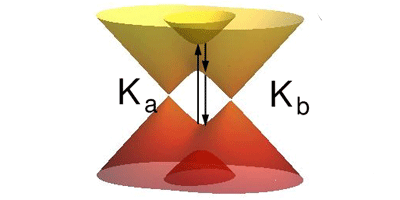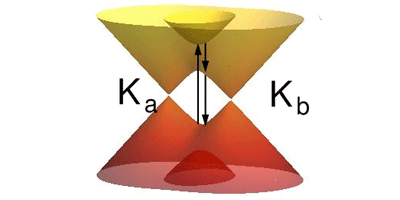Double-Layered Graphene Takes a Turn
Graphene structures can come in a variety of forms—single layer, bilayer, and ribbons to name a few. A relative newcomer is one in which two graphene layers are rotationally displaced with respect to each other by an arbitrary angle. These “misoriented” double layers are expected to play a prominent role in graphene-based nanodevices, since the rotation angle provides yet another degree of control on graphene’s electronic properties.
In Physical Review Letters, Kwanpyo Kim and colleagues at the University of California, Berkeley, have cataloged the experimental Raman spectra of a series of graphene double layers where the top layer is rotated with respect to the bottom layer in one degree increments, up to a degree mismatch. Kim et al. fabricated the double-layered samples by first growing single layers of polycrystalline graphene and then stacking them together. Transmission electron microscopy allowed the group to precisely measure the relative angle between the two layers.
The Raman spectra of these samples is often similar to that of single-layer graphene, but Kim et al. have mapped out how the intensity and position of prominent peaks—the “G” and “2D” peaks—change as the angle of rotation increases. In general, the work provides a detailed map of how the rotation angle affects the structure and transport properties of such graphene structures, in turn enabling rather precise construction of these double-layer structures. – Sami Mitra





